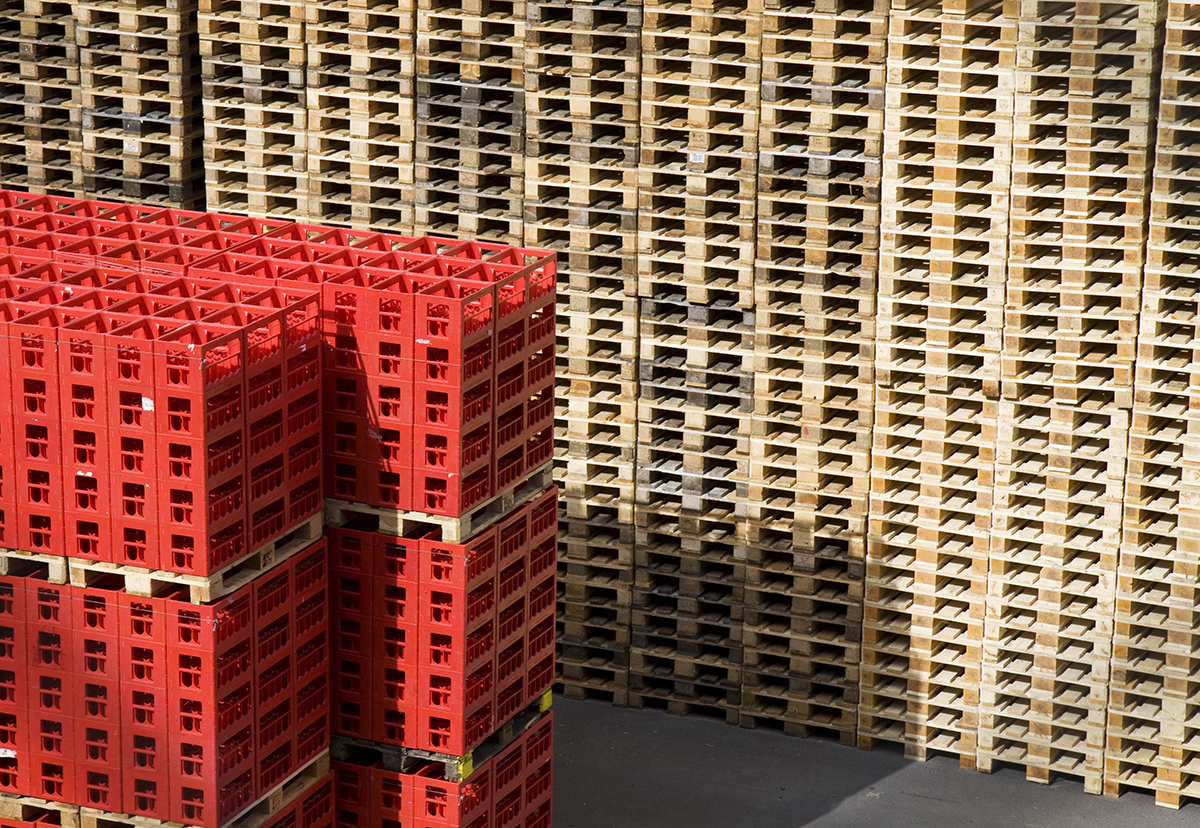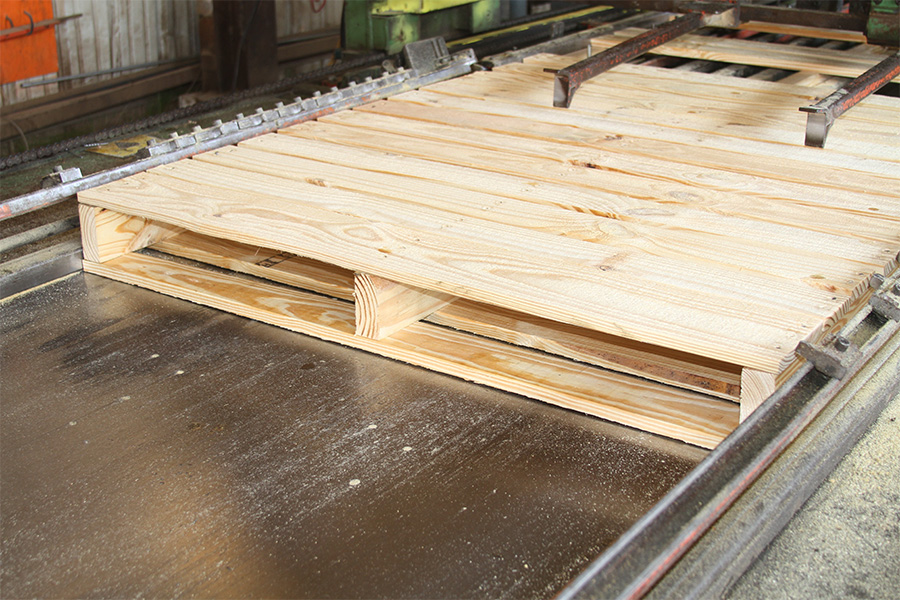
For most manufacturers, choosing between plastic vs wood pallets in Colorado can be a difficult decision.
Each type has its own advantages and disadvantages which can also change depending on individual manufacturing needs. There are many different factors that must be taken into consideration before choosing one over the other, such as cost, quality, reliability, and durability.
Ultimately, each Colorado manufacturer must decide whether plastic vs wood pallets are the best fit for their applications. Below is our rundown of the major differences between the two.
Wood Pallet Advantages
When it comes to the plastic vs. wooden pallets in Colorado debate, it’s estimated that 90-95% of shippers choose wood. It’s clear that wooden pallets are the industry favorite, and here’s why:
Wood Pallet Disadvantages
Although we are an organization that specializes in wood transport packaging, we know that there are a few disadvantages in the discussion of plastic vs. wood pallets:
Plastic Pallet Advantages
There are a few advantages to using plastic vs wood pallets in Colorado, which we will discuss here:
- Cleaner Option: Plastic pallets are generally cleaner than wood, making them ideal for industries with strict hygiene standards, such as food and pharmaceuticals.
- Resistant to Mold, Pests, and Some Weather: Pallets made of plastic are non-porous, reducing the risk of mold, bugs, and contamination. They’re also durable and weather-resistant but have limitations, especially in extreme temperatures.
- Great for Closed-Loop Systems: Many warehouses use plastic pallets in closed-loop operations where pallets are returned and reused. In some cases, wooden pallets can also be part of a return program or resold to a recycling company.
- No Loose Fasteners or Splinters: Plastic pallets do not have nails or fasteners that can come loose and do not splinter.
- Higher Burn Temperature: When it comes to burn temperature, plastic pallets ignite at higher temperatures, reducing fire risks in some conditions.
Plastic Pallet Disadvantages
While plastic pallets offer some benefits, they also come with several drawbacks that can impact cost, sustainability, and performance. From higher prices to limited repairability and environmental concerns, these factors are important to consider when choosing between plastic and wood pallets in Colorado.
- High Cost: Plastic pallets typically cost about three times more than wood pallets. While manufacturers can recoup costs through reuse, companies shipping overseas rarely get their pallets back.
- Limited Repairability: Unlike wood, plastic pallets cannot be repaired if damaged. Once broken, they must be melted down for recycling.
- Environmental Impact: Made from high-density polyethylene (HDPE), plastic pallets come from petroleum or natural gas, making them less sustainable and more environmentally impactful than wood pallets.
- Durability Concerns: While plastic pallets are weather-resistant, extreme temperatures affect their performance. In hot weather, they become flexible and lose rigidity, but in cold weather, they become brittle and more likely to break.
- Storage Challenges: Plastic pallets are lightweight, but their smooth, slippery surface makes stacking difficult, limiting storage efficiency.
- Customization Costs: Standard plastic pallet sizes do not suit all products. Custom sizes are available but come at a significantly higher cost and often require large purchase commitments.
- Lower Load Capacity: Plastic pallets generally can’t hold as much weight as wood pallets, especially under heavy loads. They can bend or sag over time, making them less reliable for certain industries.
Other Considerations for Plastic vs Wood Pallets in Colorado
1. Your Industry and Products
Your first consideration when trying to decide on plastic vs wood pallets in Colorado is the in which you operate. Some industries only use wood, others only plastic. It makes sense to stick with the standard for ease of transport and customer expectations unless you have a very good reason not to. Keep in mind that 90-95% of companies use wood.
You also need to consider the items that you’re moving. For some manufacturers, like products requiring pallet sterilization, plastic is the best fit, such as with For other manufacturers, like products requiring pallet sterilization, plastic is the best fit, such as in the pharmaceutical industry. On the other hand, heavy machinery almost exclusively relies on wood pallets due to their superior load-bearing capacity.
2. Product Weight
The weight of the products that you’re shipping will make a big difference in the type of pallet you choose. Anything over 1,500 pounds should go with wood. If you’re unsure, there are several questions you should ask your pallet manufacturer before deciding.
3. Sensitivity of Your Product
If the items you’re shipping are highly sensitive, additional cushioning or bracing may be necessary, regardless of the type of pallet you choose. However, if your products are so delicate that a loose nail or fastener could cause severe damage (think puncturing high-pressure canisters) plastic pallets might be the better option, provided they can support the required weight. Integrated packaging can help bridge this gap by combining materials like foam, corrugate, and wood to create a customized protective system. This approach ensures that even the most sensitive items get the right balance of cushioning and support, reducing the risk of damage during transit.
4. Will You Export?
If you’re planning to, wood is the way to go. Unlike plastic pallets, which tend to be significantly more expensive, wooden pallets offer a budget-friendly solution. Additionally, plastic pallets are unlikely to be returned from overseas shipments, making them a less viable option for international logistics.
5. Store Displays
If you need pallets for an in-store display, plastic may have a cleaner, more polished look than wood. However, in warehouses and big-box stores, appearance usually isn’t a deciding factor.
6. Is Cost the Most Important Factor?
If keeping costs low is your priority, wood pallets are the better choice. They are significantly cheaper, costing (on average) about three times less than plastic pallets.
7. Will You Need Custom Pallet Sizes?
When it comes to plastic vs wood pallets, customization possibilities are one of the reasons that many manufacturers choose wood. It can be difficult and cost-prohibitive to get plastic pallets in custom sizes and with extra features like blocking. Wood makes customization simple and cost-effective.
8. Supply Chain Carbon Footprint
If one of your company’s mandates is to reduce your carbon footprint in the supply chain, then wood pallets are the obvious choice over plastic. Not only does wood offer a smaller, or even negative, carbon footprint, but wood is also an eco-friendly and sustainable option.
Plastic pallets, on the other hand, are made from high-density polyethylene, which is petroleum or natural gas. That makes them a non-renewable resource.
The Bottom Line
In this comparison of plastic vs wood pallets in Colorado, we can conclude that wood is often the best fit for most applications. However, there are times when a plastic pallet is the better choice.
Of course, you’ll need to consider a lot of different factors before choosing a pallet material.
The bottom line is that manufacturers need to weigh all their options, as well as the risk/reward, to make a good decision for their individual applications.
If you need help figuring out if wood is right for your situation, get in touch with us . We’re happy to help!





